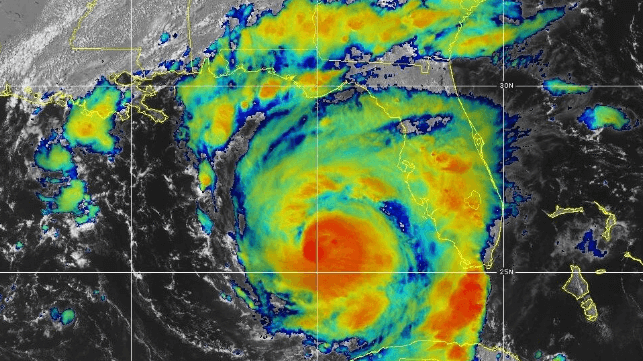Southeast Ports Prepare to Reopen After Hurricane Idalia

Hurricane Idalia came ashore in Taylor County, Florida on Wednesday morning as a Category 3 storm, bringing a massive storm surge and powerful winds to the state's Big Bend region. It was the most powerful hurricane to come ashore in this area in more than a century. The storm swept across northern Florida, Georgia and South Carolina, and was on track to move offshore into the Atlantic early Thursday.
Peak storm surge was predicted to reach up to 15 feet in the lightly-populated region near Idalia's landfall. Significant flooding was reported in Cedar Key, an island community about 70 miles southeast, and an estimated 6,000 homes have flooded in an area stretching south to Tampa.
All major roads were cleared of debris within 12 hours of the storm's arrival, according to Gov. Ron DeSantis, allowing first responders to quickly begin damage assessments and response efforts. Two deaths have been reported in connection with the storm so far, both related to motor vehicle accidents.
On Florida's Gulf Coast, all ports within the area of Sector St. Petersburg remain closed to marine traffic, including Port Tampa Bay. Port Tampa said in a statement that its staff would work around the clock in order to reopen full operations as quickly as possible after Idalia passed. The port is a key hub for gasoline and other petroleum products for northern Florida, and its landside liquid bulk operations are critical for residents and responders.

that matters most
Get the latest maritime news delivered to your inbox daily.
As Idalia crossed inland to the northeast, it weakened into a tropical storm. On the Atlantic seaboard, the ports of Jacksonville, Brunswick, Savannah and Charleston all closed in advance of its arrival. The Port of Jacksonville (Jaxport) said late Wednesday that it plans to reopen land-side cargo operations on Thursday after a post-storm assessment is completed. The Ports of Savannah and Brunswick will reopen their gates as usual on Thursday morning, as will the Port of Charleston. As of Wednesday night, U.S. Coast Guard port status for water-side operations remained at Zulu (closed) for all four.
The storm coincided with higher-than-normal tides in Savannah and Charleston, driven by a "supermoon" phase. Charleston Harbor posted its fifth-highest water level on record, with a plus tide and storm surge combining to a total of nine feet. Flooding was reported overnight in Charleston's downtown area and in the Edisto Beach district.
